
Fundamentals
The whisper of understanding often begins with a simple question, a gentle inquiry into the very fabric of our being. For those tending to textured hair, particularly the magnificent coils and kinks that grace so many, a foundational concept surfaces with profound significance ❉ Coil Porosity. At its heart, this term describes the capacity of your individual hair strands to absorb and retain moisture. Imagine your hair’s outermost layer, the cuticle, as a series of delicate, overlapping scales, much like shingles on a roof.
The way these scales lie, whether tightly sealed or slightly raised, dictates how readily water and conditioning agents can pass into and out of the hair’s inner core, the cortex. This inherent structural characteristic is not merely a scientific designation; it is a profound insight into your hair’s unique thirst and its ability to hold onto the life-giving hydration it craves.
For Roothea, understanding Coil Porosity extends beyond a mere scientific explanation; it delves into the daily dance of care and connection we share with our hair. It is the fundamental principle that guides us in selecting the nourishing elixirs and tender rituals that truly serve our strands. Without this comprehension, hair care can feel like a guessing game, a series of trials and errors yielding inconsistent results. With it, we unlock a deeper dialogue with our coils, recognizing their specific needs and responding with informed tenderness.
The significance of Coil Porosity for textured hair cannot be overstated. Unlike straight hair, which often presents a more uniform cuticle structure, coiled and kinky hair types possess a remarkable diversity in their cuticle arrangement and overall fiber architecture. This structural variability means that the interaction with moisture is inherently more complex and personalized.
A single strand of tightly coiled hair might exhibit regions of varying cuticle integrity along its length, influencing its moisture dynamics in subtle yet significant ways. This intrinsic variability necessitates a nuanced approach to care, where a general understanding of porosity becomes a guiding light.
Coil Porosity reveals your hair’s inherent ability to absorb and retain moisture, guiding your care practices.

Deciphering Hair’s Thirst
When we speak of Coil Porosity, we are essentially defining the hair’s ‘openness.’ A strand with High Porosity possesses cuticles that are more widely lifted or have structural gaps, allowing moisture to enter with ease, yet also to escape just as quickly. Think of a sponge that readily soaks up water but also releases it swiftly when squeezed. Conversely, hair exhibiting Low Porosity features tightly packed, overlapping cuticles, creating a formidable barrier.
Water struggles to penetrate this smooth surface, often beading on the strand’s exterior, but once hydration finds its way in, it is held with remarkable tenacity. In between these two poles lies Medium Porosity, where the cuticles are neither excessively open nor overly sealed, allowing for a balanced exchange of moisture.
This initial classification provides a valuable roadmap for understanding your hair’s tendencies. For instance, individuals with low porosity coils might find that heavy creams or butters tend to sit on their hair, leaving a residue, because the tightly bound cuticles resist the absorption of larger molecular structures. Conversely, those with high porosity hair might experience rapid drying after washing, or their hair might feel perpetually thirsty, despite consistent conditioning, as the open cuticles allow moisture to evaporate too quickly.

The Visual and Tactile Clues
While scientific measurement offers precise data, the initial interpretation of your hair’s porosity often begins with simple observation and touch. The ‘float test,’ though sometimes debated for its scientific accuracy, remains a popular and accessible starting point for many. Placing a clean, product-free strand of hair into a glass of water and observing its behavior provides a preliminary indication. If the strand sinks quickly, it suggests higher porosity.
If it floats on top, it hints at lower porosity. A strand that gradually sinks points towards medium porosity.
Beyond this, the way your hair feels and reacts to products offers invaluable clues. Does water bead on your strands for a while before absorbing? This often points to low porosity. Does your hair dry remarkably fast after washing, almost before you’ve finished styling?
High porosity might be at play. Do products seem to absorb well, leaving your hair feeling nourished without being weighed down or perpetually dry? This aligns with medium porosity. These everyday observations form a crucial part of the initial understanding, building a personal connection to your hair’s unique needs.
The meaning of Coil Porosity, therefore, transcends a mere technicality; it becomes a dialogue between you and your hair, a quiet conversation about its wants and resistances. This foundational knowledge empowers you to move beyond generic advice and to truly listen to the language of your coils, preparing you for a more harmonious and effective hair care journey. It sets the stage for a deeper exploration into the science and spirit of textured hair.

Intermediate
Moving beyond the initial grasp of Coil Porosity, we approach an intermediate understanding, where the focus shifts from simple classification to the practical applications and nuanced implications for textured hair. This deeper interpretation acknowledges that porosity is not a static characteristic but a dynamic interplay of genetics, care practices, and environmental factors. For Roothea, this level of insight is where knowledge truly begins to transform into intentional action, allowing for more precise and effective hair care rituals.
The clarification of Coil Porosity at this stage involves recognizing its manifestation in daily and weekly hair care. It helps explain why certain products or techniques yield vastly different results for individuals with similar curl patterns but differing porosity levels. For instance, a common challenge for those with low porosity coils is the phenomenon of product buildup. Because the cuticles are tightly sealed, products with larger molecules, such as heavy butters, silicones, or certain oils, struggle to penetrate the hair shaft.
Instead, they accumulate on the surface, creating a film that can weigh down the hair, dull its appearance, and even hinder further moisture absorption. This necessitates a careful selection of lighter, water-based formulations and regular clarifying routines.
Conversely, for individuals with high porosity coils, the challenge often lies in moisture retention. The open cuticles act like an open door, allowing water to enter readily but also to escape just as swiftly. This leads to hair that dries quickly, feels perpetually dry, or struggles to maintain definition.
The solution here involves strategies that help to ‘seal’ the cuticle, such as using heavier emollients, protein treatments (to temporarily fill gaps in the cuticle), and the strategic application of humectants in appropriate climates. The significance of this distinction is profound, moving hair care from a generic routine to a tailored regimen that truly addresses the hair’s inherent needs.
Intermediate understanding of Coil Porosity refines product selection and care strategies for optimal moisture balance.

Product Interaction and Formulation
The intermediate level of Coil Porosity understanding directly influences product choice. Consider the molecular weight and structure of ingredients. For low porosity hair, ingredients with smaller molecular sizes, like water, aloe vera, and lighter oils such as jojoba or grapeseed oil, are more likely to penetrate the tightly bound cuticle.
Humectants like glycerin, when used in balanced formulations, can draw moisture from the air into the hair. The focus is on lightweight hydration that doesn’t overburden the strands.
For high porosity hair, the priority shifts to ingredients that offer robust sealing and conditioning. Heavier oils like castor or olive oil, shea butter, and ceramides can help to smooth and reinforce the cuticle. Protein treatments, derived from sources like wheat, rice, or silk, temporarily patch gaps in the cuticle, providing structural support and improving moisture retention.
However, even with high porosity, balance is key; excessive protein can lead to stiffness and breakage. The intention behind product formulation becomes clearer when viewed through the lens of porosity.
| Porosity Type Low Porosity |
| Preferred Product Characteristics Lightweight, water-based, small molecular size, minimal heavy oils/butters. |
| Example Ingredients/Products Aloe vera juice, rosewater, jojoba oil, grapeseed oil, lightweight leave-ins, clarifying shampoos. |
| Porosity Type Medium Porosity |
| Preferred Product Characteristics Balanced, versatile, can handle a wider range of products, good moisture retention. |
| Example Ingredients/Products Balanced conditioners, styling creams, moderate use of oils, protein treatments as needed. |
| Porosity Type High Porosity |
| Preferred Product Characteristics Rich, sealing, heavier emollients, protein-fortified, focuses on moisture retention. |
| Example Ingredients/Products Shea butter, castor oil, olive oil, protein treatments (rice, wheat, silk), deep conditioners, heavier styling creams. |
| Porosity Type Understanding these distinctions helps tailor a more effective hair care regimen. |
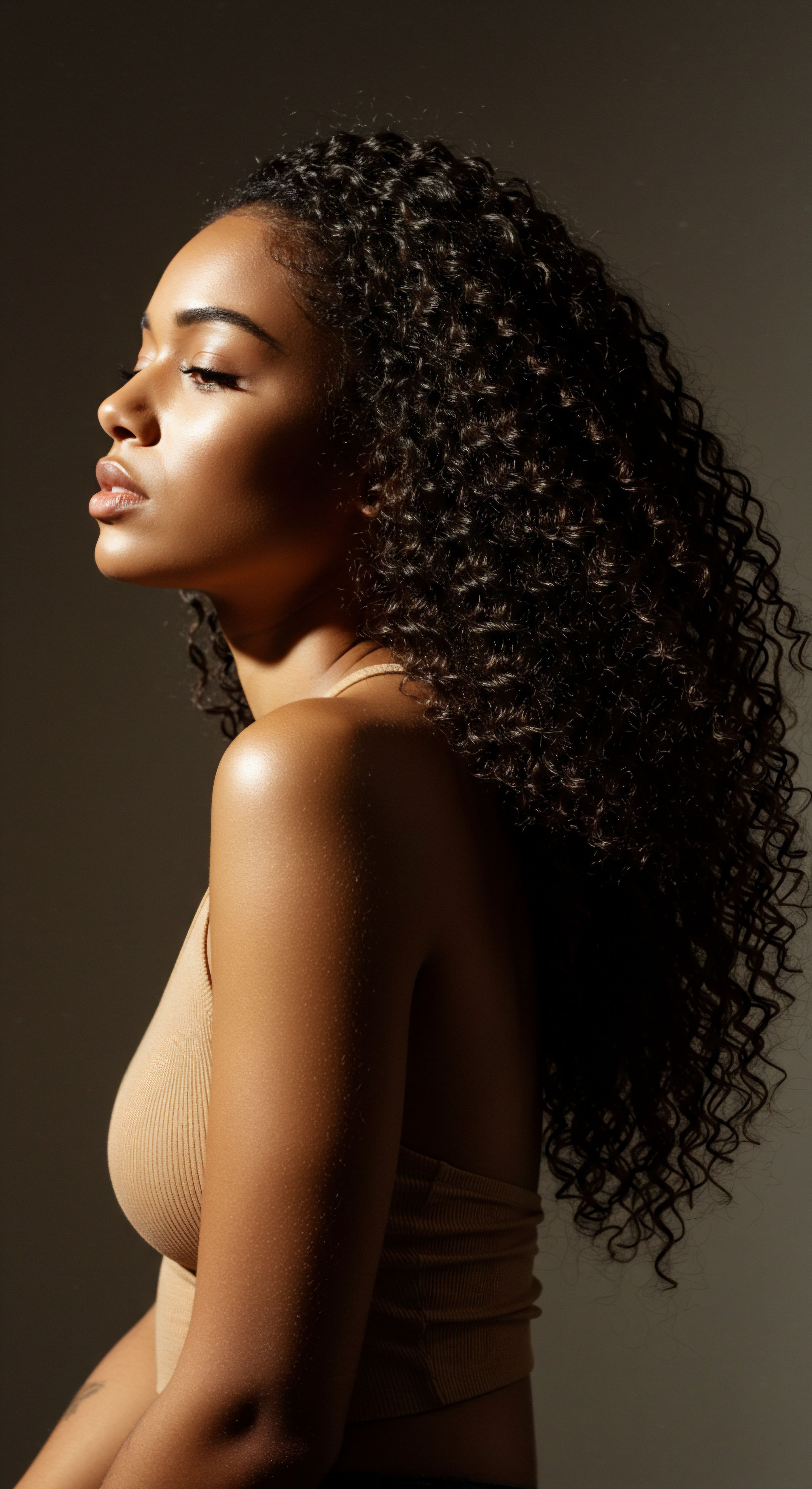
Environmental Influences and Care Adjustments
Beyond genetics and product choices, the external environment plays a significant role in how Coil Porosity manifests. Humidity levels, for instance, can drastically alter the behavior of hair. In high humidity, low porosity hair might struggle to absorb moisture, leading to product sitting on the surface, while high porosity hair might swell excessively and frizz as it readily takes in atmospheric water. In dry climates, high porosity hair can become incredibly parched, quickly losing any moisture it gains, while low porosity hair might feel brittle and dry because it struggles to draw in ambient moisture.
This understanding calls for seasonal adjustments in hair care. During humid summers, high porosity coils might benefit from anti-humectant products or more robust sealing methods. In dry winters, both low and high porosity hair will likely need additional deep conditioning and moisture-locking strategies. The interaction between your hair’s inherent porosity and the climate around you creates a dynamic landscape for care, demanding adaptability and keen observation.
The interpretation of Coil Porosity at this intermediate level extends to styling practices as well. Heat styling, for example, can temporarily lift the cuticle, making even low porosity hair behave more like high porosity hair, at least in the short term. Protective styles, on the other hand, can help shield the cuticle from environmental stressors, assisting in moisture retention for all porosity types, but especially for high porosity hair. This comprehensive view of Coil Porosity, integrating product science, environmental awareness, and styling techniques, moves us closer to truly harmonizing with our textured hair.

Advanced
The advanced understanding of Coil Porosity transcends simple classification, delving into its intricate biomechanical, genetic, and even socio-historical dimensions, particularly within the context of textured hair, Black hair, and mixed-race hair heritage. At this level, Coil Porosity is not merely a descriptor of cuticle behavior; it represents a complex interplay of inherent fiber morphology, environmental stressors, and the cumulative impact of care practices over time. It is a nuanced explication of the hair’s long-term resilience and its vulnerability, viewed through a lens that acknowledges the profound cultural and personal significance of textured strands.
The meaning here becomes deeply scientific and critically reflective. From a scientific standpoint, Coil Porosity is understood not as a uniform characteristic along a single strand, but as a spectrum of permeability influenced by the helical structure of coiled hair. The very act of coiling introduces points of stress and varying degrees of cuticle integrity along the fiber’s axis.
This can lead to localized regions of higher permeability even within a seemingly low porosity strand, a concept that challenges simplistic ‘float test’ interpretations and demands a more sophisticated analytical approach. The elucidation of Coil Porosity at this echelon involves understanding the precise chemical bonds and protein arrangements that dictate cuticle adhesion, as well as the external forces that can disrupt them.
Furthermore, this advanced perspective recognizes the historical context of hair care for people of African descent, where traditional practices often intuitively managed moisture dynamics without the formal nomenclature of ‘porosity.’ These practices, passed down through generations, were often centered around protective styling, natural emollients, and gentle cleansing—strategies that, in hindsight, align perfectly with the needs of various porosity types within the textured hair spectrum. The designation of Coil Porosity, therefore, offers a modern framework for understanding ancestral wisdom, providing a scientific basis for deeply rooted cultural traditions.
Advanced Coil Porosity understanding uncovers complex biomechanical, genetic, and historical influences on textured hair’s moisture dynamics.

The Biomechanics of Coiled Hair and Porosity
At an advanced level, the discussion of Coil Porosity necessitates an examination of the unique biomechanical properties of highly coiled hair. Unlike straight hair, which has a relatively uniform circular cross-section, coiled hair exhibits an elliptical or even flattened cross-section, and its growth pattern involves frequent twists and turns. These structural irregularities inherently create points of mechanical stress along the hair fiber.
Research indicates that these sharp bends and twists can lead to areas where the cuticle layers are more prone to lifting, chipping, or even forming microscopic cracks, particularly at the apex of a coil or where the hair shaft changes direction. This phenomenon contributes to what might be termed ‘localized porosity variations’ within a single strand. Even hair generally classified as ‘low porosity’ might possess these microscopic vulnerabilities, leading to paradoxical moisture loss despite initial resistance to water absorption. This is distinct from chemically induced damage; it’s a consequence of the hair’s natural, beautiful geometry.
Consider the phenomenon of Hydro-Fatigue, a concept less frequently discussed in popular hair care discourse but critically relevant for highly coiled hair. Hydro-fatigue refers to the cumulative damage inflicted upon hair fibers by repeated cycles of swelling (from water absorption) and contraction (from drying). Textured hair, with its unique internal structure and external coil patterns, undergoes more significant dimensional changes during these hydration cycles compared to straight hair.
Each cycle of swelling and deswelling places stress on the cuticle layers and the internal cortical cells. Over time, this repeated stress can lead to the formation of micro-fractures within the cuticle and even the cortex, subtly altering the hair’s permeability.
This continuous stress can effectively ‘increase’ the hair’s functional porosity over its lifespan, making it more susceptible to moisture loss and environmental damage, even if its initial, virgin state was low porosity. A study published in the Journal of Cosmetic Science, for instance, has explored the impact of repeated wetting and drying on the mechanical properties of different hair types, demonstrating how the unique architecture of coiled hair can render it more vulnerable to this form of structural degradation over time. This nuanced understanding challenges the static view of porosity, highlighting its dynamic and evolving nature, especially for textured hair which is often subjected to frequent wetting as part of its care regimen.
- Cuticle Integrity ❉ The advanced designation of Coil Porosity requires understanding the subtle variations in cuticle arrangement and adhesion across different regions of a single coiled strand.
- Water Diffusion Kinetics ❉ Beyond simple absorption, advanced analysis considers the rate and pathway of water molecules through the hair fiber, influenced by its internal structure and the presence of any micro-damage.
- Hydro-Fatigue Impact ❉ The cumulative effect of repeated wetting and drying cycles on the structural integrity and long-term porosity of highly coiled hair is a critical consideration.
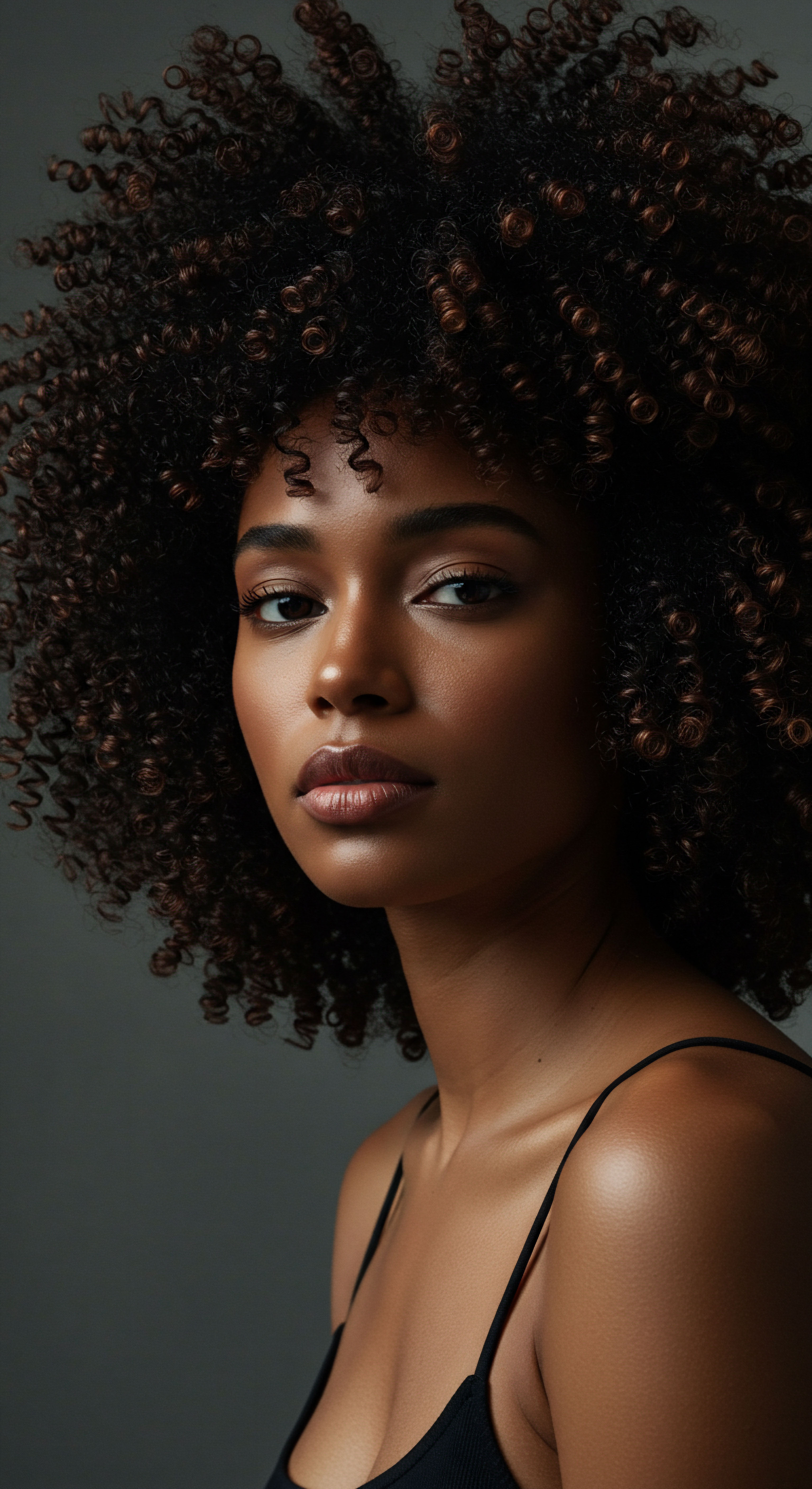
Genetic Predisposition and Environmental Interplay
The designation of Coil Porosity is deeply rooted in genetics. Hair texture, including the degree of curl and the inherent characteristics of the cuticle, is largely inherited. This means that an individual’s predisposition to low, medium, or high porosity is often a genetic legacy.
However, this genetic blueprint is constantly interacting with environmental factors. Exposure to UV radiation, harsh chemicals (like relaxers or strong dyes), mechanical manipulation (brushing, styling with tension), and even diet can alter the hair’s cuticle structure and, consequently, its porosity.
For Black and mixed-race individuals, whose hair often exhibits the most diverse and intricate coil patterns, this interplay is particularly significant. Historical and ongoing hair practices, influenced by cultural norms and societal pressures, have sometimes involved processes that inadvertently compromised cuticle integrity, leading to altered porosity over time. Understanding this complex interplay provides a comprehensive interpretation of an individual’s hair porosity, moving beyond a simple snapshot to a longitudinal view of hair health.
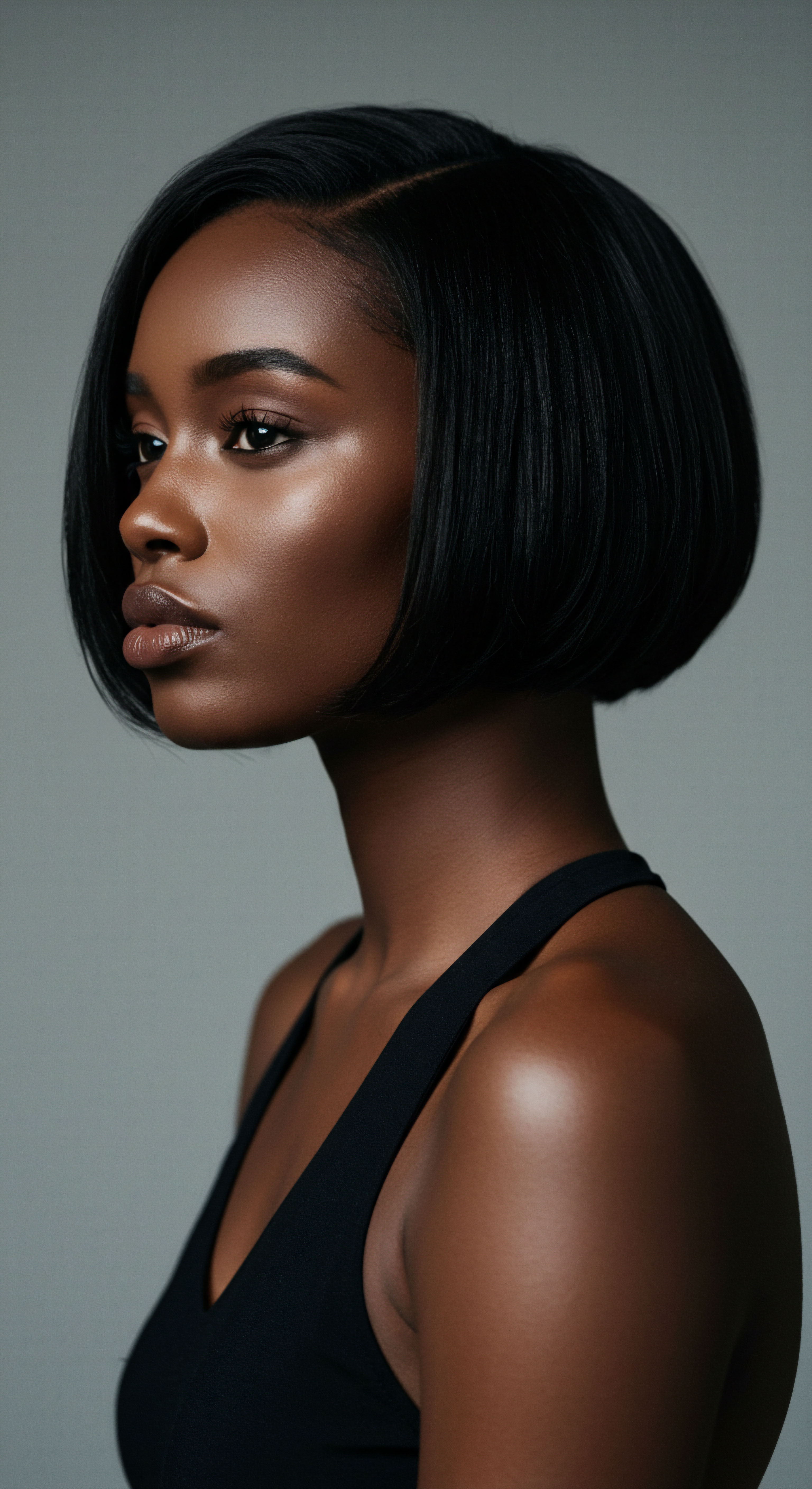
The Sociocultural Resonance of Hair Porosity
Beyond the scientific and biomechanical, the advanced understanding of Coil Porosity extends into the sociocultural realm. For textured hair, particularly within Black communities, hair is deeply intertwined with identity, heritage, and self-expression. The challenges associated with managing different porosity types—be it the frustration of product sitting on low porosity coils or the constant battle against dryness for high porosity strands—are not merely cosmetic concerns. They can influence self-perception, impact daily routines, and even shape communal conversations around beauty standards.
When Roothea speaks of Coil Porosity, we are not just providing a definition; we are offering a tool for empowerment. This deeper understanding allows individuals to reclaim agency over their hair care, to challenge prevailing narratives that might not serve their unique hair needs, and to cultivate a relationship with their strands that is rooted in knowledge and self-acceptance. It is an acknowledgment that the science of hair is inseparable from its lived experience, its cultural significance, and its profound personal meaning. The advanced explication of Coil Porosity therefore becomes a pathway to greater self-knowledge and a celebration of the diverse beauty of textured hair in all its forms.
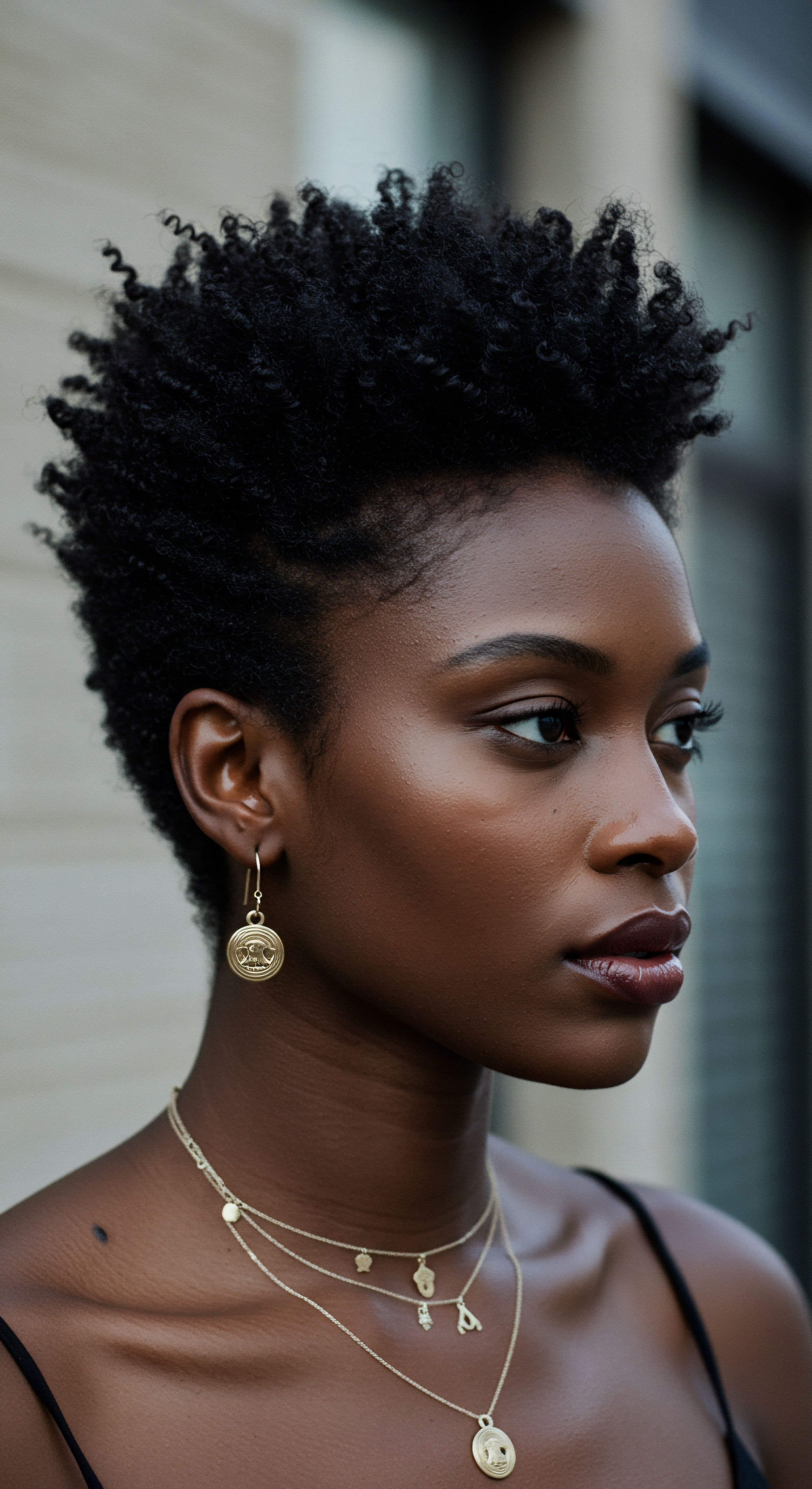
Reflection
As we draw our exploration of Coil Porosity to a close, we find ourselves not at an endpoint, but at a serene vista overlooking the expansive landscape of textured hair care. This journey from foundational definitions to advanced scientific and cultural interpretations reveals a profound truth ❉ our hair, in its myriad coils and kinks, is a living testament to complexity and beauty. Understanding Coil Porosity is more than acquiring knowledge; it is about cultivating a deeper, more empathetic relationship with our strands, honoring their unique thirst and their resilient spirit.
The quiet wisdom gleaned from this understanding empowers us to move beyond generic prescriptions, to truly listen to the subtle language of our hair. It invites us to select products and practices with intention, to adapt our routines with the changing seasons and the evolving needs of our strands, and to celebrate the rich heritage woven into every coil.
Ultimately, the designation of Coil Porosity serves as a gentle reminder that true hair wellness springs from a place of informed reverence. It encourages us to approach our textured hair not as a challenge to be conquered, but as a cherished part of ourselves, deserving of understanding, patience, and the most thoughtful care. May this journey deepen your connection to your magnificent coils, inspiring a lifelong dance of nourishment and self-love.
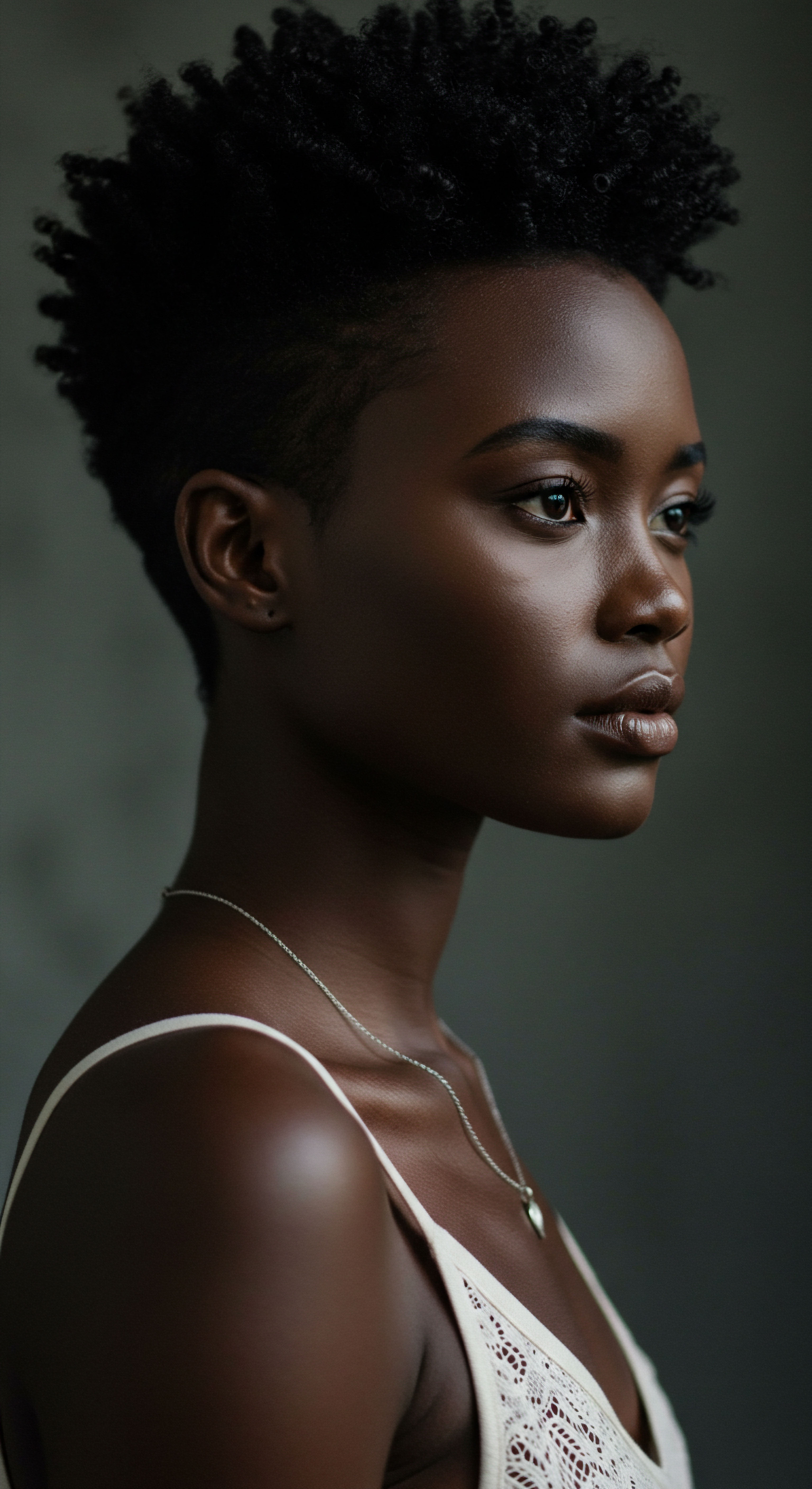
References
- Franbourg, A. Hallegot, P. Baltenneck, F. Toutain, C. & Leroy, F. (2003). African hair ❉ a comparative study of its physical and mechanical properties versus Caucasian and Asian hairs. Journal of Cosmetic Science, 54(4), 387-397.
- Porter, D. & Bhushan, B. (2008). Atomic force microscopy studies of human hair. Journal of Applied Physics, 104(1), 014301.
- Robbins, C. R. (2012). Chemical and Physical Behavior of Human Hair (5th ed.). Springer.
- Gavazzoni Dias, M. F. R. (2015). Hair cosmetics ❉ an overview. International Journal of Trichology, 7(1), 2-15.
- Marsh, J. M. & R. L. R. (2007). The structure and properties of human hair. The Science of Hair Care, 2nd ed. 1-44.
- Feughelman, M. (1997). Mechanical Properties and Structure of Alpha-Keratin Fibres ❉ Wool, Human Hair and Related Fibres. UNSW Press.
- McMichael, A. J. & Parks, K. P. (Eds.). (2014). Hair and Scalp Diseases ❉ Medical, Surgical, and Aesthetic Treatments. CRC Press.
- Waller, R. (2008). The physics of hair. Physics Today, 61(12), 48-54.